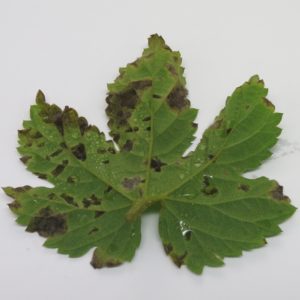
Hop Downy Mildew Reported in North Carolina
The NC State Plant Disease and Insect Clinic has confirmed hop downy mildew in a sample from Western North …



El inglés es el idioma de control de esta página. En la medida en que haya algún conflicto entre la traducción al inglés y la traducción, el inglés prevalece.
Al hacer clic en el enlace de traducción se activa un servicio de traducción gratuito para convertir la página al español. Al igual que con cualquier traducción por Internet, la conversión no es sensible al contexto y puede que no traduzca el texto en su significado original. NC State Extension no garantiza la exactitud del texto traducido. Por favor, tenga en cuenta que algunas aplicaciones y/o servicios pueden no funcionar como se espera cuando se traducen.
Inglês é o idioma de controle desta página. Na medida que haja algum conflito entre o texto original em Inglês e a tradução, o Inglês prevalece.
Ao clicar no link de tradução, um serviço gratuito de tradução será ativado para converter a página para o Português. Como em qualquer tradução pela internet, a conversão não é sensivel ao contexto e pode não ocorrer a tradução para o significado orginal. O serviço de Extensão da Carolina do Norte (NC State Extension) não garante a exatidão do texto traduzido. Por favor, observe que algumas funções ou serviços podem não funcionar como esperado após a tradução.
English is the controlling language of this page. To the extent there is any conflict between the English text and the translation, English controls.
Clicking on the translation link activates a free translation service to convert the page to Spanish. As with any Internet translation, the conversion is not context-sensitive and may not translate the text to its original meaning. NC State Extension does not guarantee the accuracy of the translated text. Please note that some applications and/or services may not function as expected when translated.
Collapse ▲
The NC State Plant Disease and Insect Clinic has confirmed hop downy mildew in a sample from Western North …

Dr. Anthony Keinath, Vegetable Pathologist at Clemson University in South Carolina, has found powdery mildew in watermelons and issued …

Written by Lina Quesada-Ocampo and Kimberly D’Arcangelo Cucurbit downy mildew (CDM) was confirmed on a cucumber sample from a production …
Wheat crops that are flowering now in northeast NC are at moderate risk of scab. Much of the crop there …
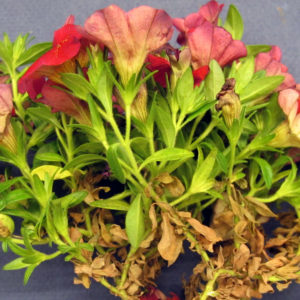
A calibrachoa (million bells) with dried, brown lower leaves was submitted this week to the NCSU Plant Disease and …
For wheat flowering now, scab risk is low across North Carolina due to recent dry weather. Rain predicted for April 23-28 will …
Wheat scab risk is moderate to high for wheat flowering now in coastal NC counties. These include south Columbus, …
This is the first North Carolina small grain scab risk commentary for the 2018 scab monitoring season. In most of NC, …
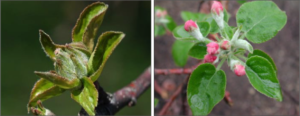
The arrival of tight cluster signals the start of fungicide protection for diseases other than apple scab and frogeye …
The warm temperatures in Western NC during the past few weeks have caused green tip to arrive early on …
Even with the cold snap this past week, most apple cultivars in Western NC are now at or have …

The specific exemption section 18 label obtained in 2016 for using Mertect (thiabendazole) for control of black rot (caused …
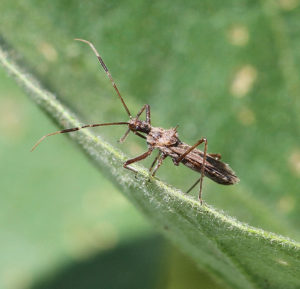
One of my duties as an Agriculture Agent for North Carolina Cooperative Extension is to help farmers when they …
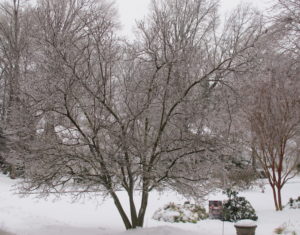
The North Carolina State University holiday/winter closing will occur from Saturday, December 23rd through Monday, January 1st. The Plant …

Tobacco blue mold was confirmed (July 11, 2017) in commercial tobacco in Caswell County, North Carolina by the Plant …
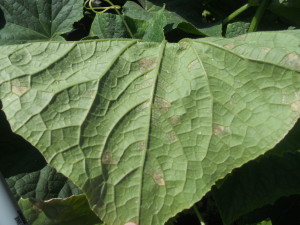
Written by Lina Quesada-Ocampo and Kimberly D’Arcangelo Cucurbit downy mildew was reported today (June 6, 2017) in commercial cucumber fields …
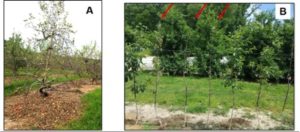
Across Western NC there have been numerous reports of apparently healthy trees mysteriously collapsing in young high-density apple orchards. …

This factsheet describes the biology of the cane lace bug or bamboo lace bug, Leptodictya …

This soybean insect factsheet describes the biology, damage, and control of the soybean aphid, a …

This factsheet describes the biology of the banded sphinx moth or lesser vine sphinx, Eumorpha …

This factsheet describes the biology of the elm-grass root aphid, Tetraneura ulmi, and provides residential …

This publication discusses flying unmanned aerial vehicles (drones, model aircraft) for commercial purposes. You'll learn …
This publication describes the life cycle, scouting and treatment of the balsam twig aphid, a …

This article will cover two important scale insect pests of blueberries in North Carolina, terrapin …

This vegetable pathology factsheet describes the identification and treatment of anthracnose of pepper.